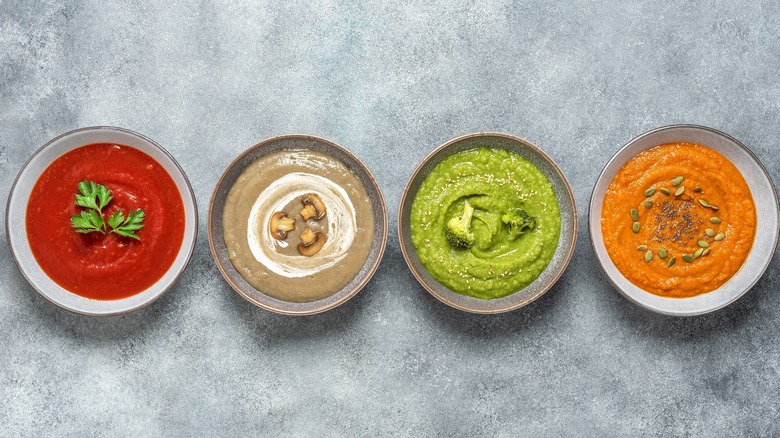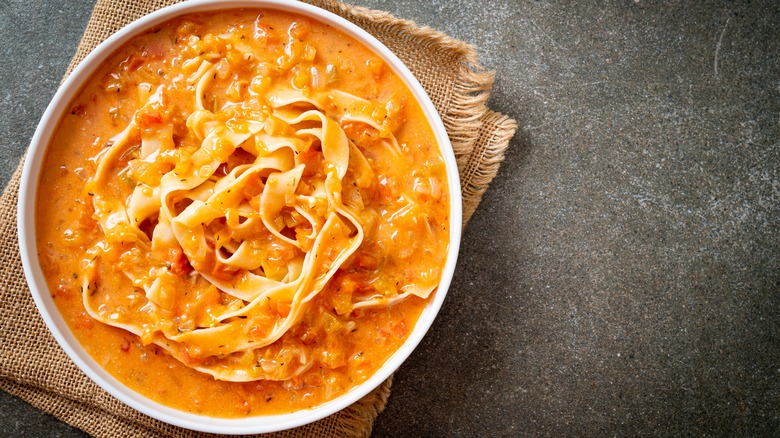You Should Be Making Pasta Sauce With Leftover Soup
Fall is gorgeous for many reasons, but none more so than the fact that the chill turns our hygge vibes up to 11 and makes us crave hearty bowls of brothy concoctions that warm to the bone. Be it a gumbo, a burgoo, or a minestrone, there is something about the heady elixir of stock, vegetables, meat, and possibly a little dairy and starch that just feels like an edible cardigan.
Another great thing about soups — and stews, chowders, and the like — is that the yield is spectacular. Few recipes yield fewer than four servings, which means that in one aromatic, satisfying cooking session, you can put out meals for days. Alas, there will be those who are nonplussed by the idea of eating the same bowl of food several meals in a row.
What, then, is to be done when you have an ample amount of leftover soup, but you're leery of heating up another bowl? One idea is to up the starch quotient — and lifespan — of that soup by turning it into the sauce for an equally satisfying bowl of pasta.
How to nail soup as sauce
Epicurious hits on what they call "Big Pot Fatigue," that love affair home cooks have with a large meal that comes together in one vessel — looking at you, soups and stews — but which quickly gives way to a sense of culinary monotony. Thus, they say, bring on the pasta. A few pounds of your noodle of choice paired with a creamy carrot soup, a drizzle of olive oil, and a dash of poppy seeds can all but remake a meal. They don't even limit themselves to fall, noting that summer soups, such as a cold zucchini-basil, can make a fine sauce for a room temperature pasta dish.
When it comes to transmogrifying a soup into a pasta dish, the only real limit are your imagination and taste. There are, however, some great rules of thumb that The Kitchn has compiled to help guide your vision along successfully from one dish to another. First, think about the soup-to-sauce conversion; it is going to take no small amount of heat, so maybe avoid chunky seafood soups that might get rubbery. In the same vein, be judicious with your heat application as velvety, creamy soups can quickly separate. Conversely, if you have a brothy soup, give it some extra — but still gentle — time with the heat to reduce the liquid and concentrate flavors. And when it comes to cooking the pasta, don't be too quick to toss the pasta water as it is infused with starch that can help bind soup to noodles.

